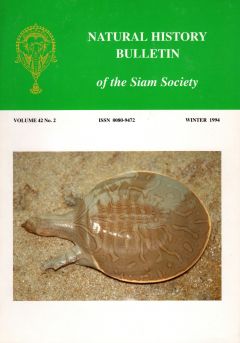The Nan Project, directed by Assist. Prof. Dr. Dia Shannon comprises 3 research initiatives:
-
From a Bare Mountain to a Regenerated Forest: compared landscape planting designs for forest restoration in Nan Province, sponsored by the National Science and Technology Development Agency (NSTDA), 2017 to 2020.
-
Forest Landscape Restoration and Community Well-being: supported by the Program Management Unit on Area Based Development (PMU A), 2020 to 2021.
-
Evaluating Changes and Ecosystem Services of Nan Restored Forests: funded by the National Science and Technology Development Agency (NSTDA), 2021 to 2022.
The research spans three districts of Nan Province—Pua, Phu Phiang and Wiang Sa—with three plots in each district. The project commenced with a survey of reference forest remnants, near the restoration sites, including i) the Nam Kaen - Nam Sa Watershed Forests (Phu Phiang District), supervised by the Royal Forest Department; ii) Mon Hin Kaew Community Forest (Pua District) and iii) Ban Muang Noeng Community Forest (Wiang Sa District). The survey involved documenting tree density, species diversity and phenology, as well as bird diversity, over three years. Such data were then compared with the same in restoration forests, established in the 3 districts.
Knowledge of the framework species method of forest ecosystem restoration was transferred to local communities and restoration plots of various sizes were planted with a range of indigenous framework tree species. Post-restoration activities include frequent weeding and fertilizer application, as well as the cutting of firebreaks in the dry season. Monitoring focused on survival and growth rates of each species, as well as the diversity of soil microbial communities. Ecosystem services, provided by the restored forests, including climate control, were evaluated, along with forest products used by local people. The effects of restoration on the quality of life of local people was also assessed. Currently, villagers who are project members continue to actively contribute to the care of the restored forest, to ensure its long-term health and growth.
In collaboration with:
Biodiversity
Biodiversity recovery is one of the main aims of forest restoration - but what to measure? Plants? Birds? Mammal? Learn simple monitoring techniques here.
111: The Importance of Vesicular-Arbuscular Mycorrhizae (VAM) in Deciduous Tropical Forests
ABSTRACT: This study determined the prevalence of vesicular-arbuscular mycorrhizal infection amongst leguminous trees in Doi Suthep-Pui National Park and investigated the effects of VAM on...
112: Measuring and monitoring biodiversity in tropical and temperate forests - review of an international symposium
The international symposium on "Measuring and Monitoring Biodiversity in Tropical and Temperate Forests" was organized by the International Union of Forest Research Organizations and the Royal...
113: Flowering and seed production phenology of dry tropical forest trees in northern Thailand
ABSTRACT: Restoring native forests to conserve biodiversity and for watershed protection requires detailed knowledge of ecosystem functioning, including flowering and fruiting phenology. Such data...
114: Can community forestry save biodiversity?
SUMMARY: All over the world, governments are handing over control of state forests to local communities, in the hope that local communities will manage them better than state agencies have. But...
115: The Diversity of Trees and Seedlings in Burnt and Non-burnt Forest
ABSTRACT: This paper presents a comparison of forest after 20 years of fire protection with an adjacent area where fires occur annually. The ratio of seedlings per tree in the burnt area (4.59)...
116: Seed-Dispersal Mechanisms of Evergreen and Deciduous Trees on Doi Suthep
This is a remarkably detailed report on the seed-dispersal mechanisms of trees that are characteristic of the various forest types of Doi Suthep. Although it has not scanned well – the paper is...
117: Factors affecting germination of tree seeds from dry tropical forests in northern Thailand
Kate Hardwick carried out the first research on forest tree seeds in our group in 1992, in a small nursery within CMU's Biology Department, whilst she was a volunteer with the Dhammanaat...
118: A transect survey of monsoon forest in Doi Suthep-Pui National Park
ABSTRACT: A transect survey (0.828 ha) of monsoon forest was carried out in Doi Suthep-Pui National Park, Northern Thailand. Tree species richness was 90 species per hectare, for trees of diameter...
119: The Small Mammal Communities of Phu Khieou Wildlife Sanctuary and Doi Suthep-Pui National Park
BSc student, Somyod Ua-Apisitwong provided an overview of the common small mammals that live in evergreen and deciduous in northern Thailand—species that would indicate recovery of small...










